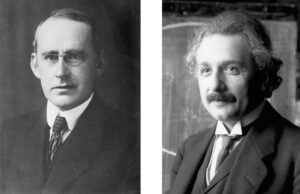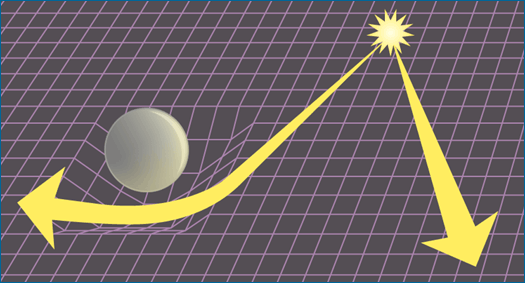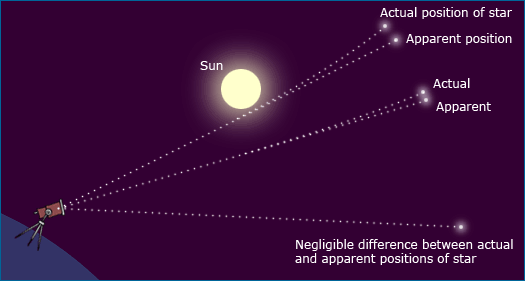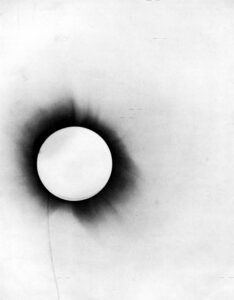
You might imagine scientists running experiments on rats, bacteria, chemicals, or even high energy particles — but on stars? How could that be possible? While it is true that stars are, to say the least, uncooperative experimental subjects, scientists can and do observe the results of natural experiments on these massive balls of gas. In a natural experiment, the universe, in a sense, performs an experiment for us — as it did for Albert Einstein’s theory of general relativity.
Proposed in 1915, the theory describes relationships between space, time, mass, and gravity. One of the expectations it generates is that the gravitational field caused by mass should seem to bend light. In other words, if the theory of general relativity were true, as light passes close to very massive objects, its path should appear to shift. This might seem like an expectation that would be easy to test with a straightforward experiment: get some large objects and compare the path of light when the objects are placed close to the path versus when they are placed far from the path. But this is easier said than done. In order for us to observe the deflection of light, the objects in question must be about as heavy as our own sun — more than 300,000 times the mass of the Earth! — and so cannot easily be moved around for our little experiment.

Fortunately, the universe has many examples of this natural experiment set up all around us. Starlight travels to Earth over long distances. As our planet moves around the sun, the light of those stars reaches us via paths that sometimes pass near our massive sun. We should be able to compare the path of starlight passing close to the sun to the path of starlight that reaches us without passing close to the sun, allowing us to figure out if observations support or refute Einstein’s theory. Unfortunately, this natural experiment also contains an inherent problem. The sun is so bright that it’s difficult to see starlight passing anywhere near it! Just look up at the sky on a sunny day. See any stars? No? They’re out there, but you can’t see them because of the brightness of the sun. The exact time that we’d want to be able to observe the starlight (when it’s passing close to the sun) is the exact time that the starlight can’t be seen.


To observe the results of this natural experiment, we’d need to flick a switch and turn off the light of the sun during the middle of the day. Of course, we can’t do that. However, soon after Einstein proposed general relativity, astronomer Arthur Eddington realized that the movement of objects within the solar system provides us with a sort of natural dimmer. During a solar eclipse, the moon comes between the Earth and the sun, blocking out the light of the sun for a few minutes. Would this let us observe the results of our natural experiment — the path of starlight passing close to the sun? The next solar eclipse would occur on May 29, 1919, and astronomers were ready for it. Scientists took photos of groups of stars positioned near the dimmed sun and compared them to similar photos taken at night — when the light of those stars would not pass close to the sun before reaching us. The photos revealed that the sun’s gravity did indeed change the path of nearby starlight and provided strong evidence in support of general relativity. Of course, the theory can also be tested on a much smaller scale through standard experimentation — and when the technology was in place to perform these tests, general relativity passed with flying colors. However, for many scientists, this cosmic natural experiment facilitated by a solar eclipse was particularly convincing evidence for the validity of Einstein’s theory of general relativity.
